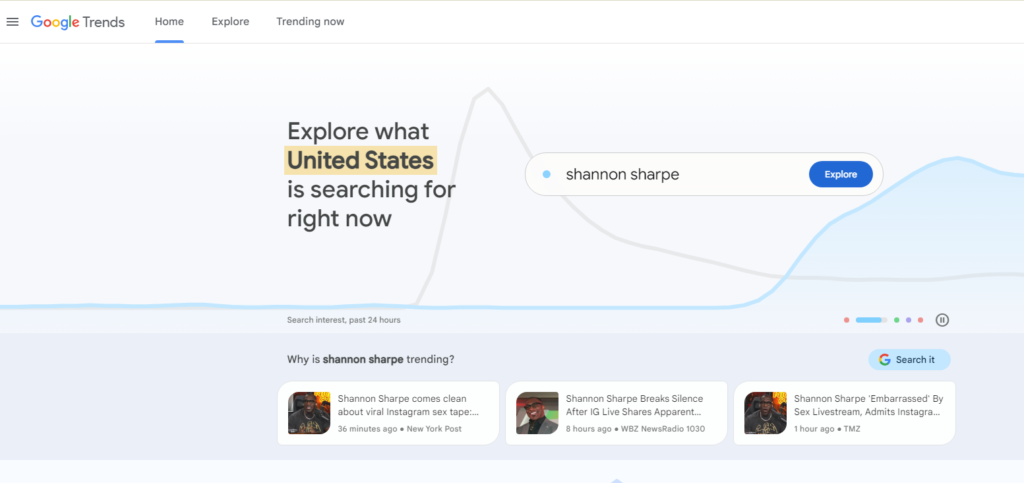
In today’s digital landscape, launching a niche magazine offers a unique opportunity to connect deeply with a specialized audience. By focusing on specific interests, such as sustainable living or vintage car restoration, you can create content that resonates profoundly with like-minded enthusiasts.
The key to building a loyal subscriber base lies in understanding your audience’s needs and delivering high-quality, relevant content that speaks directly to them.
Utilize modern technology like AI-driven content personalization and reader engagement analytics to tailor your offerings and track what resonates most. Optimize your magazine for mobile devices to cater to on-the-go readers. Strategic marketing efforts, including social media buzz and influencer collaborations, can further expand your reach and enhance subscriber loyalty.
Launching a niche magazine is about more than just content; it’s about creating a vibrant community. By focusing on quality, engagement, and personalization, you can transform your magazine into a cherished resource that readers eagerly anticipate. Ready to embark on this exciting journey?
Let’s explore the essential steps to make your niche magazine a success.
TL;DR
- Discover your niche: Identify a specific audience with shared interests and a need for information.
- Craft compelling content: Create high-quality, engaging, and informative articles that resonate with your target audience.
- Build a strong brand identity: Develop a unique name, logo, and visual style that reflects your magazine’s values and personality.
- Choose the right platform: Select a platform that aligns with your goals and audience, whether it’s print, digital, or a hybrid approach.
- Market your magazine effectively: Utilize social media, email marketing, and other strategies to reach your target audience and build a loyal subscriber base.
Niche Magazines: A Powerful Force in Publishing
Niche magazines have become increasingly popular in recent years, offering a unique opportunity to connect with a specific audience and build a loyal following. Here’s why niche magazines are so powerful:
- Targeted audience: Niche magazines focus on a specific interest or demographic, allowing them to cater to the needs and interests of a highly engaged audience.
- Strong community: Niche magazines often foster a sense of community among their readers, who share a common passion or interest.
- Expert content: Niche magazines often feature expert writers and contributors who are passionate about their subject matter, providing readers with valuable insights and information.
- Monetization opportunities: Niche magazines can generate revenue through subscriptions, advertising, and affiliate marketing, appealing to brands and businesses looking to reach a targeted audience.
Examples of Successful Niche Magazines:
- Bon Appetit: A food and cooking magazine that caters to a sophisticated audience interested in gourmet cuisine and culinary trends.
- National Geographic: A travel and nature magazine that features stunning photography and insightful articles about the world’s cultures and environments.
- Runner’s World: A magazine for runners that provides training tips, product reviews, and inspiring stories.
Step-by-Step Guide to Launching Your Niche Magazine
1. Define Your Niche and Target Audience
This is the foundation of your magazine. Without a clear understanding of your niche and target audience, you’ll struggle to create relevant content, attract readers, and build a loyal following.
Remember, “Focus on identifying your target audience, communicating an authentic message that they want and need and project yourself as an ‘expert’ within your niche.” – Kim Garst
- Think about your passions: What are you passionate about? What knowledge or skills do you possess that could benefit others? Think about your interests, expertise, and the potential for a dedicated audience.

- Conduct market research: Use tools like Google Trends to research potential niches and identify areas with high demand and low competition. For example, you can search for terms like “sustainable living magazines” or “DIY craft magazines” to see the search volume and related keywords.
- Create a reader persona: Develop a detailed profile of your ideal reader, including their demographics, interests, pain points, and media consumption habits. This will help you tailor your content and marketing efforts. For example, if your niche is sustainable living, your reader persona might be a young professional who is environmentally conscious, enjoys DIY projects, and follows eco-friendly influencers on social media.
2. Develop a Compelling Content Strategy
Your content is the heart of your magazine. It should be informative, engaging, and relevant to your target audience.
- Brainstorm article ideas: Consider topics that address your readers’ needs, interests, and pain points. Offer practical advice, share inspiring stories, and provide valuable insights. For example, a sustainable living magazine could feature articles on how to reduce your carbon footprint, DIY upcycling projects, and eco-friendly product reviews.
- Create a content calendar: Plan your content in advance to ensure a consistent flow of fresh and relevant articles. You can use tools like Google Calendar or Trello to organize your content schedule.
- Write high-quality content: Focus on clarity, accuracy, and engaging storytelling. Use visuals, infographics, and other multimedia elements to enhance reader engagement. For example, you could use Canva to create visually appealing infographics and graphics for your articles.
3. Build a Strong Brand Identity
Your brand identity is what sets you apart from the competition. It’s the unique personality and visual style that your readers will associate with your magazine.
- Choose a memorable name: Select a name that is relevant to your niche, easy to remember, and reflects your brand’s personality. For example, a sustainable living magazine could be named “Green Living” or “Eco-Friendly Living.”
- Design a logo: Create a visually appealing logo that represents your magazine’s values and aesthetic. You can use online logo design tools like Looka or Canva to create a professional-looking logo.
- Develop a consistent visual style: Use a consistent color palette, typography, and imagery across all your platforms to build brand recognition. For example, you could use a green color palette for a sustainable living magazine to reflect its environmental focus.
4. Choose the Right Platform
The platform you choose will depend on your goals, audience, and budget.
- Print: Print magazines offer a tangible and collectible experience, but they can be expensive to produce and distribute.
- Digital: Digital magazines are more affordable and accessible, allowing you to reach a wider audience. They also offer interactive features and analytics. Popular platforms for launching digital magazines include Issuu, Magzter, and Joomag.
- Hybrid: A hybrid approach combines the best of both worlds, offering both print and digital versions of your magazine.
5. Market Your Magazine Effectively
Once you have a solid foundation, it’s time to market your magazine and attract subscribers.
- Social media: Use social media platforms like Facebook, Instagram, and Twitter to connect with your target audience, share content, and promote your magazine. Use Hootsuite or Buffer to schedule your social media posts and manage multiple accounts.
- Email marketing: Build an email list and send out regular newsletters to keep your subscribers engaged and informed. You can use email marketing platforms like Mailchimp or ConvertKit to create and send email campaigns.
- Content marketing: Create valuable content, such as blog posts, infographics, and videos, to attract new readers and build your brand’s authority. You can use WordPress to create a blog and host your content.
- Paid advertising: Consider using paid advertising platforms like Google Ads and Facebook Ads to reach a wider audience.
6. Engage with Your Audience
Building a loyal subscriber base requires more than just publishing great content. You need to engage with your readers and create a sense of community.
- Respond to comments and feedback: Take the time to interact with your readers and address their questions and concerns.
- Host contests and giveaways: Offer incentives to encourage engagement and build excitement around your magazine. You can use Woobox to create and manage contests and giveaways.
- Create a forum or online community: Provide a platform for your readers to connect with each other and share their thoughts and experiences. You can use Discourse to create a forum or Facebook Groups to build a community.
7. Monetize Your Magazine
Once you have a loyal subscriber base, you can start exploring ways to monetize your magazine.
- Subscriptions: Offer paid subscriptions to access exclusive content, behind-the-scenes features, and special offers. You can use platforms like Substack or Memberful to manage subscriptions.
- Advertising: Partner with brands that align with your niche and audience to generate revenue through advertising. You can use advertising networks like Google AdSense or Mediavine to display ads on your website.
- Affiliate marketing: Promote products and services related to your niche and earn commissions on sales. You can use affiliate networks like Amazon Associates or ShareASale to find affiliate programs.
8. Continuously Improve and Adapt
The world of publishing is constantly evolving. To stay ahead of the curve, you need to continuously improve and adapt your magazine based on feedback, trends, and market demands.
- Analyze your data: Track your website traffic, social media engagement, and subscriber growth to identify areas for improvement. Use tools like Google Analytics to track your website traffic and Facebook Insights to analyze your social media performance.
- Experiment with new formats and platforms: Explore new ways to reach your audience and deliver engaging content. For example, you could create a podcast or a YouTube channel to expand your reach.
- Stay up-to-date with industry trends: Attend conferences, read industry publications, and follow thought leaders to stay informed about the latest developments in publishing. You can subscribe to industry publications like “The Magazine” by the American Society of Magazine Editors, “Folio” magazine, and “MediaPost.”
And to help you find ways to make money online, check out this video: What To Do Online For Money.
For More Free Videos, Subscribe to the Rhodes Brothers YouTube Channel.
Actionable Steps for Launching a Niche Magazine
Starting a niche magazine is an exciting journey! Here’s a breakdown of actionable steps for different experience levels:
For Beginners:
Take the first steps by identifying your passion and exploring your niche. Ask yourself: What are you most excited to share with others? Use Google Trends to see if there’s demand for your chosen topic.
Look for existing magazines, blogs, or online communities related to your niche to get a sense of the landscape. Create a simple reader persona by thinking about your ideal reader’s age, interests, and where they get their information.
Start building a following by launching a blog or social media account. This is a great way to test the waters and get feedback before committing to a full magazine. Remember to focus on quality over quantity. Start with a few high-quality articles that showcase your expertise and engage your audience.
For Intermediate Level:
Now that you have a foundation, it’s time to deepen your understanding of your audience and refine your content strategy. Develop a detailed reader persona, going beyond basic demographics to delve into their motivations, challenges, and media consumption habits.
Create a content calendar to ensure a consistent flow of fresh and relevant articles. Experiment with different content formats, like infographics, videos, or podcasts, to reach a wider audience.
Build a strong social media presence by sharing your content, engaging with your audience, and promoting your magazine. Consider a hybrid approach, offering both print and digital versions of your magazine to reach a broader audience.
For Advanced Level:
You’re ready to take your magazine to the next level! Conduct in-depth market research to understand your competition and identify opportunities for differentiation. Develop a comprehensive marketing plan that includes social media, email marketing, content marketing, and paid advertising.
Explore monetization options like subscriptions, advertising, and affiliate marketing. Continuously analyze your data to identify areas for improvement and adapt your strategy based on feedback and trends.
Stay up-to-date with the latest publishing technology and explore new formats and platforms to reach your audience.
Common Mistakes to Avoid
- Not defining your niche clearly: Failing to identify a specific audience and their needs can lead to a lack of focus and engagement. Solution: Conduct thorough market research and create detailed reader personas.
- Creating low-quality content: Your content should be informative, engaging, and well-written. Don’t sacrifice quality for quantity. Solution: Invest time in crafting high-quality articles, edit carefully, and use visuals to enhance readability.
- Ignoring your audience’s feedback: Listen to your readers and make adjustments based on their feedback. Solution: Engage with your readers on social media, respond to comments, and conduct surveys to gather feedback.
- Not promoting your magazine effectively: Marketing is essential for attracting new subscribers and building a loyal audience. Solution: Develop a comprehensive marketing plan that includes social media, email marketing, and paid advertising.
- Giving up too soon: Building a successful magazine takes time and effort. Don’t get discouraged if you don’t see results overnight. Solution: Set realistic goals, track your progress, and celebrate your successes along the way.
Frequently Asked Questions
How do I find my niche?
Think about your passions, skills, and knowledge. What are you passionate about sharing with others? What unique perspective or expertise do you possess? Research online forums, social media groups, and industry publications to identify areas with high demand and low competition.
What are some good platforms for launching a niche magazine?
Popular platforms for launching digital magazines include Issuu, Magzter, and Joomag. For print magazines, you can work with local printers or online printing services.
How do I build a loyal subscriber base?
Create high-quality content that resonates with your target audience. Engage with your readers on social media, offer valuable resources, and build a sense of community.
How do I monetize my magazine?
Consider offering paid subscriptions, accepting advertising, or implementing affiliate marketing strategies.
How do I stay motivated and avoid burnout?
Remember why you started your magazine in the first place. Connect with your readers, celebrate your successes, and don’t be afraid to ask for help when needed.
What are some good tools for managing my magazine?
Tools like Canva, Mailchimp, and Google Analytics can help you with design, email marketing, and website analytics.
How do I measure the success of my magazine?
Track your website traffic, social media engagement, subscriber growth, and revenue generated.
What are some good resources for learning more about magazine publishing?
Check out publications like “The Magazine” by the American Society of Magazine Editors, “Folio” magazine, and “MediaPost.”
How do I get feedback on my magazine?
Ask your friends, family, and target audience for feedback on your content, design, and overall brand experience.
What are some tips for writing engaging content?
Use strong headlines, tell stories, use visuals, and focus on providing value to your readers.
Ready, Set, Publish!
Launching a niche magazine is a journey that requires passion, dedication, and a clear understanding of your audience. By following the steps outlined in this article, you can create a magazine that resonates with your readers, builds a loyal community, and ultimately achieves success.
Remember, the key is to define your niche, create compelling content, build a strong brand identity, choose the right platform, and market your magazine effectively.
Engage with your readers, respond to their feedback, and create a sense of community. Explore monetization options like subscriptions, advertising, and affiliate marketing. Continuously analyze your data, experiment with new formats, and stay up-to-date with industry trends.
Ready to launch your dream magazine? Get started today by identifying your niche and brainstorming content ideas. Be sure to check out the Rhodes Brothers YouTube Channel for the latest videos and information to help you succeed.
Thank you for joining us! We hope this article has inspired you to take the leap and share your passion with the world through a niche magazine.
Resource List
Books:
- Writer’s Digest Guide to Magazine Article Writing by Kerrie Flanagan
- Content Rules: How to Create Killer Content, Build a Loyal Audience, and Win in the Content Economy by Ann Handley
Podcasts:
Tools:
- Canva: Graphic design tool
- Mailchimp: Email marketing platform
- Google Analytics: Website analytics tool
- Hootsuite: Social media management tool
- Trello: Project management tool
Courses:
- The Magazine Publishing Certificate Program at the University of California, Berkeley
- The Content Marketing Certification Program at the Content Marketing Institute
- The Digital Marketing Specialization on Coursera
Launching a Niche Magazine Cheat Sheet
- Define your niche: What are you passionate about? Who is your ideal reader?
- Research your niche: Use Google Trends to see if there’s demand. Look for existing magazines and communities.
- Create a reader persona: Understand your audience’s age, interests, and media habits.
- Craft compelling content: Provide valuable, engaging, and informative articles.
- Build a strong brand identity: Choose a memorable name, design a logo, and develop a consistent visual style.
- Choose the right platform: Print, digital, or hybrid? Consider your goals and audience.
- Market your magazine: Utilize social media, email marketing, content marketing, and paid advertising.
- Engage with your audience: Respond to comments, host contests, and build a community.
- Monetize your magazine: Explore subscriptions, advertising, and affiliate marketing.
- Continuously improve: Analyze your data, experiment with new formats, and stay up-to-date.
- Use tools: Leverage Google Trends, Canva, Mailchimp, and Google Analytics.
- Focus on quality: Create high-quality content and engage your readers.
- Be patient: Building a successful magazine takes time and effort.
- Never give up: Believe in your dream and keep pushing forward!




